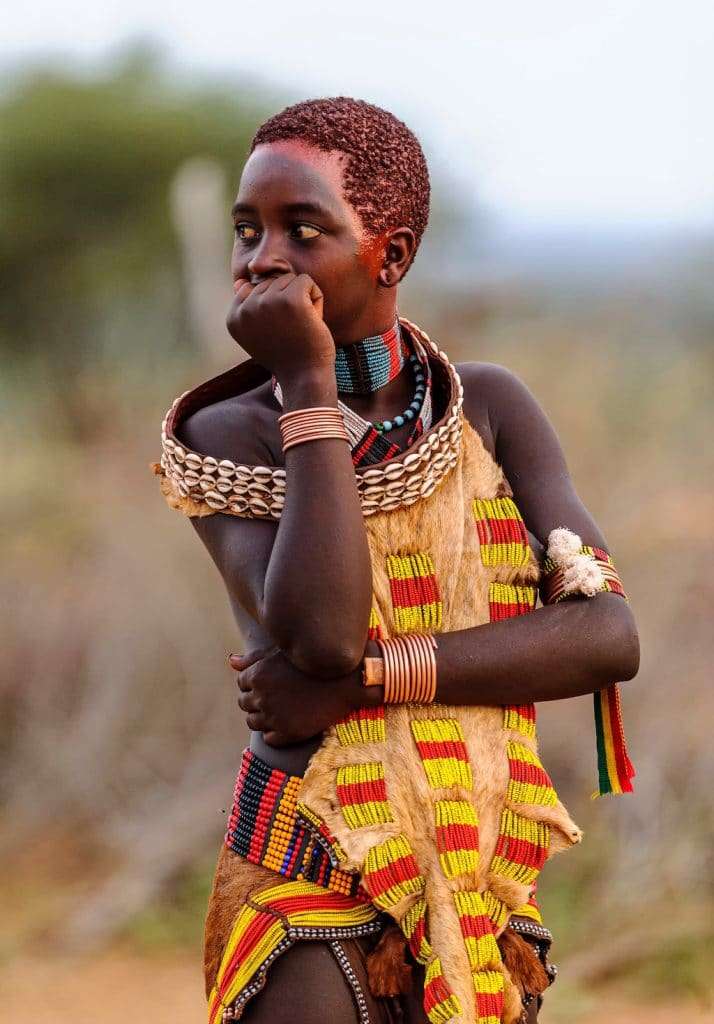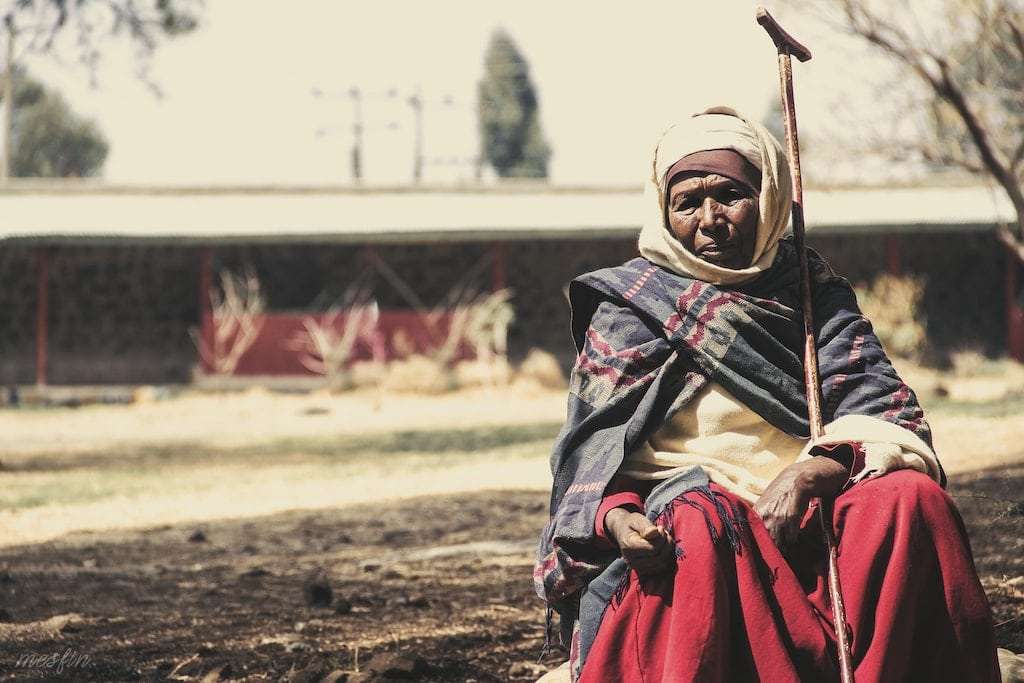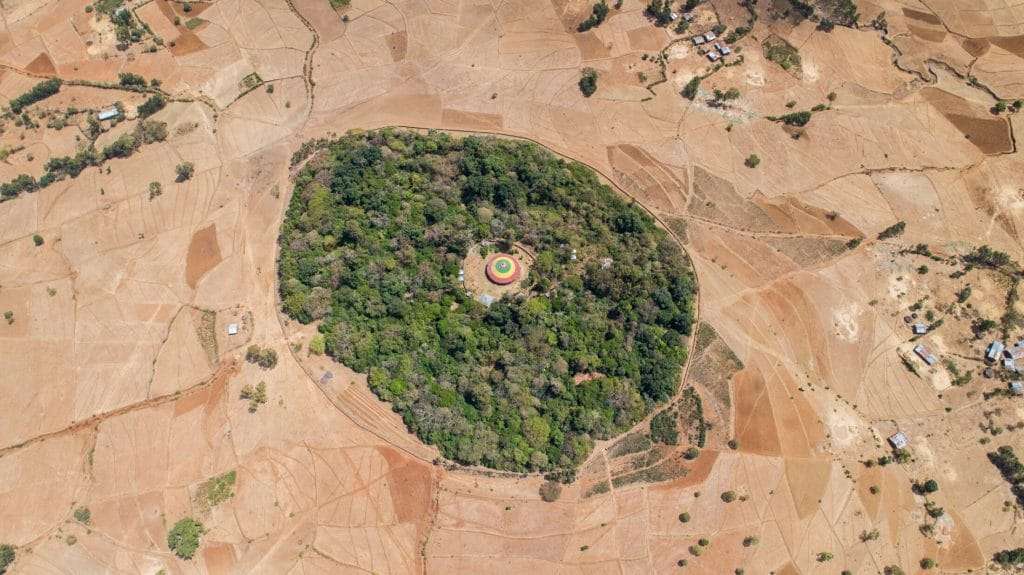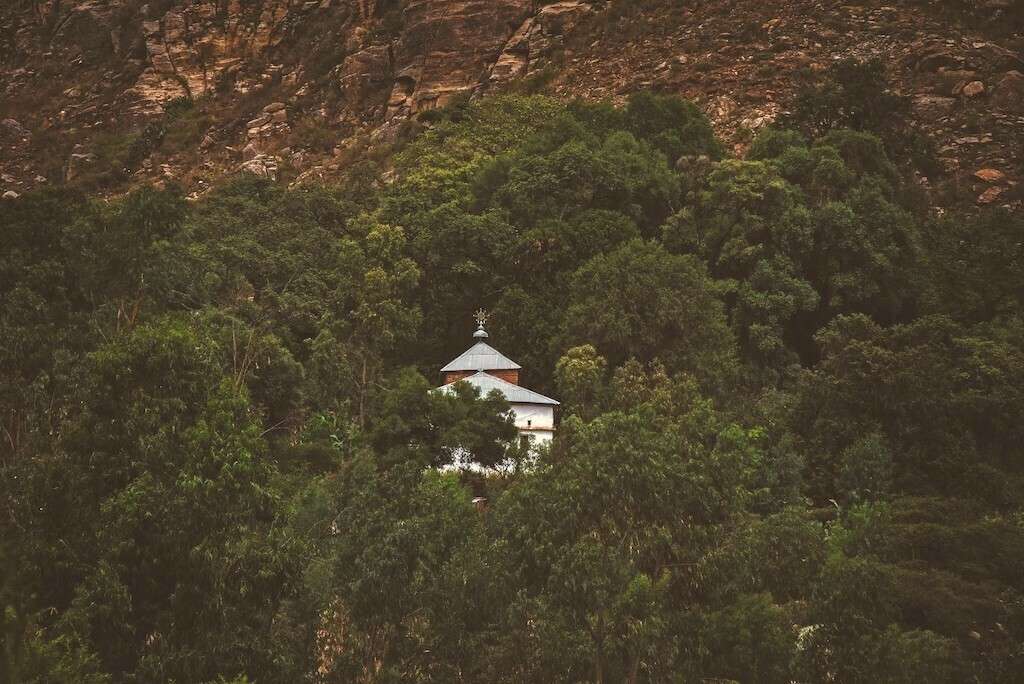The Horn of Africa is in crisis. As drought continues across the region, protecting Ethiopia’s 35,000 church forests could be one of the best lines of defense.
Across eastern Africa, drought has taken a toll. The region is now in the longest and most severe drought on record after a fifth straight rainy season without any rain.
And according to recent predictions, the region, which encompasses Ethiopia, Kenya, and Somalia, is headed for a sixth straight drought season.
The region already has a long history of food insecurity with two food crises in the last decade alone. Continued below-average rainfall will be devastating, experts warn. The International Federation of Red Cross and Red Crescent Societies estimates that without proper attention and support, famine could be imminent.
In Ethiopia, though, a glimmer of hope.
Ethiopia is home to one of the oldest Christian faiths in the world, the Tewahedo Church. This faith centers its churches inside “church forests”—lush green expanses of protected old-growth forest that once covered much of the country. Today, some 35,000 of these church forests remain and may be the best hope for a biodiverse future in Ethiopia as the nation struggles with severe drought as a result of climate change.
The forests, according to ecologist Alemayehu Wassie, are critical to the faith. These protected areas offer up followers the mystical—spiritual connection that can only happen within nature. God, the Tewahedo believe, lives within the plants, each a gift and a symbol of where heaven and earth meet.
“The church is inside the forest, and the forest is inside the church,” he explains in the Jeremy Seifert-directed 2020 film, The Church Forests of Ethiopia.
If the church loses the forest, it will lose itself.
– Aba Gebra Mariam Alene, Ethiopian Orthodox Priest
Wassie is speaking metaphorically, but also literally. The forest plants have long been used in the church interior — leaves, berries, and barks add color and detail to centuries-old murals on walls made from the forest trees themselves.
“We don’t know how much diversity has been lost,” Wassie says. “But it appears there is a very significant amount left — more than we expected.”

A century of aggressive agriculture stripped Ethiopia of its forests. Ethiopia, part of the Horn of Africa, now faces uncertain times ahead as a warming planet and degrading drylands take their toll. According to UNICEF, nearly 2 million children are in desperate need of treatment as a result of malnutrition; in Somalia, more than 200,000 people are facing famine.
That’s only going to worsen. Recent climate models suggest Ethiopia sits in the path of warming weather trends as the atmosphere traps more heat. The region could see further warming between 0.7°C and 2.3°C this decade, and an increase of 1.4°C to 2.9°C by the 2050s. Given the population is expected to double by mid-century, it could spell doom for the Eastern African nation.
And earlier this week, UNICEF reported that the region is facing a steep rise in child marriages—doubling in more than a year—as a result of the drought crisis and lack of food. The number of children at risk of dropping out of school has also risen, tripling in three months across Ethiopia as well as in Kenya and Somalia. This leaves young girls particularly vulnerable, the group says, putting them in greater danger of female genital mutilation (FGM) and childhood marriage.
“We are seeing alarming rates of child marriage and FGM across the Horn of Africa – with some destitute families arranging to marry off girls as young as twelve to men more than five times their age,” Andy Brooks, UNICEF’s Regional Child Protection Advisor for Eastern and Southern Africa, said in a statement.
“Child marriage and FGM end childhoods—driving girls out of school and leaving them more vulnerable to domestic violence and a lifetime of poverty. The figures we have do not capture the magnitude of the problem: large swathes of the Horn of Africa have no specialist facilities where cases can be reported. This is a children’s crisis, and we urgently need more funding to scale up our response in Ethiopia, Kenya, and Somalia—not only to save lives in the short-term but to protect them in the long-term.”
100 years of farming, an eternity of drylands
If Ethiopia has a prosperous future, much of it could hinge upon the survival of the biodiverse old-growth church forests.
Ethiopia is the 12th most populous country in the world and the second-largest in sub-Saharan Africa. Its population boom, which now stands at more than 100 million, is due in large part to religious beliefs that encourage large families. The country also lacks family planning services common in the West. It’s what also makes it home to a high number of child marriages.
By the mid-nineteen-seventies, when the country was under communist rule, it sped up deforestation for nationalized land. This razed more than 40 percent of the remaining forestland. Today, only five percent of Ethiopia’s forests remain, most of that as church forests.

Researchers and conservationists are now working to protect what remains. These lush green landscapes range in size from three to 300 hectares. They’re home to all manner of shrubs and plants, evergreen trees, and forest-dwelling creatures including monkeys and birds.
The church forests also sequester carbon, reduce erosion, and conserve water in a historically parched region. Ethiopia is home to one of the hottest spots in the world, Dallol. Its average annual temperature is 34.6 °C (94.3 °F).
The war in Ukraine is also accelerating the crisis across the Horn of Africa. Ninety-two percent of Somalia’s wheat had historically come from Russia and Ukraine, but supply lines are now blocked. UNICEF reports that skyrocketing food prices also mean families cannot afford to buy basic staples across the region.
A forested future
Wassie and his team have been collecting samples from the various forests in order to identify species and protect them, which could help regenerate native crops and restore local food sources.
“It’s a remote part of the world, where the natural environment has become part of the spiritual environment,” Christof Mauch, director of the Rachel Carson Center for Environment and Society at the University of Munich, Germany told Nature. “It is culturally, as well as scientifically, important to save these pockets of forests.”
Without the biodiversity of the church forests, though, Ethiopia’s pervasive farmland would fail to thrive. The pollinators that propagate crops call the forests home. No forests mean no food outside of them, either.

Churches have begun erecting walls around the forests to help prevent further attrition. Animal grazing, wood collecting, and plowing are all damaging sacred forests.
“These forests are not just good for people,” Wassie told Seifert, “they are also the last shelter for wild animals. In our tradition, the church is like an ark. A shelter for every kind of creature and plant. If a wildcat or little kudu or vervet monkey leaves the church forest, immediately he will be killed. Here the animals are safe.”
Wassie and his colleagues are incentivizing the churches to build those walls. They’re making cash donations to the churches. Some of the priests are becoming more invested and acting as stewards of the land. Many have begun to take stones from agricultural fields to build protective walls outside the forests. This also helps improve crop yields and reduces the need for farmers to inch closer to the forest ecosystems.
But the hope over time is that the forest walls extend out to farther-reaching swaths of land long destroyed by agriculture and a warming planet and return them to their natural, spiritual state, as sacred as the churches they surround.
Related on Ethos:


